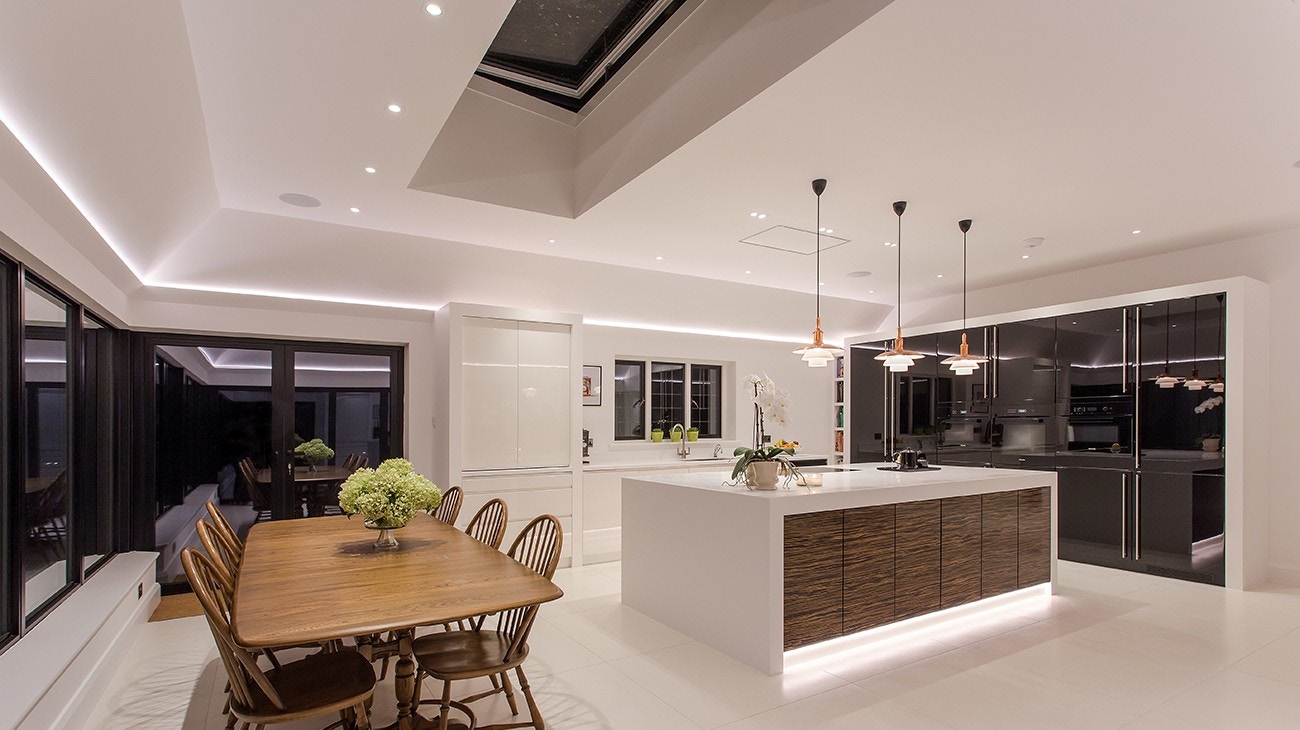A statement chandelier over a table is a classic and traditional place to start when it comes to dining room lighting. But if you want a comfortable, flexible, and stylish space to eat and socialise in, you will need to think beyond the installation of impressive fixtures.
In this article, we explore ways to light your dining room in a professional manner, so that you can enjoy the benefits of a well-lit space.
1. Focus on your dining room table
When it comes to planning your dining room lighting, the best solutions always begin with lighting the dining table. Rather than treating your dining room as a whole, base your initial lighting design around the table and work from there. This will help you achieve the most crucial part to dining room lighting – to provide an atmosphere around the table during dinner, so that when you have people visiting, the rest of the room recedes into the background.
To get this right, a series of low-hung pendants or a chandelier is usually preferred, and they should sit around 36 inches between the table and bottom of the fixture.
2. Factor in sizing for sufficient coverage with pendants
The size of your fixtures makes a huge difference to both the aesthetics and functions of your dining room, meaning it’s super important that your light works in scale with your dining room table.
For example, selecting a chandelier or pendant too big will leave your space feeling overcrowded and flooded with light. Whereas, choosing a fixture too small may not provide enough light, and will fail to draw the attention to the centre that your dining room needs. In short, you need a relative fixture that provides a healthy and balanced feel.
For small round tables, a central pendant light will work wonderfully. But for a longer and rectangular dining table, a series of pendant lights (usually 3 or 5) will offer enough horizontal coverage.



